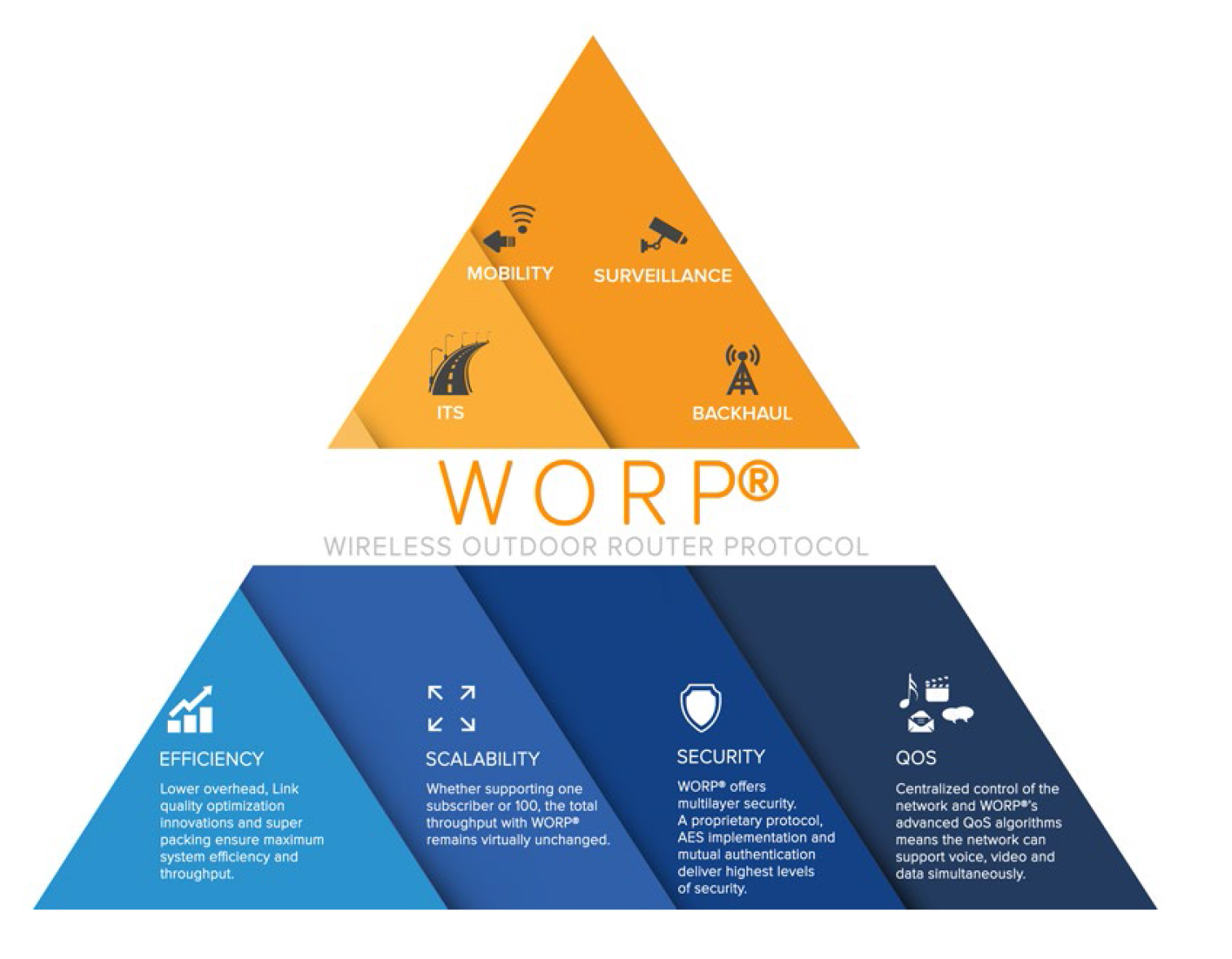High capacity
With a typical security camera consuming up to 8 Mbps, to be effective the wireless network will likely be supporting more than one camera per network. Proxim offers a variety of Tsunami® products that support 10Mbps, 25Mbps, 50Mbps, 100Mbps, 240Mbps up to 633Mbps of useable bandwidth.
Reliable video communications
There are three main factors to reliable video communications:
- The network must have high availability (as much as 99.999%)
- The Tsunami® product line of outdoor wireless networking systems offer a full two year warranty. Proxim has customers who have deployed radios from ten years ago, have never been touched, and are operating today. With an field determined MTBF of well over 1 million hours for some product lines, up to over 2 million hours of MTBF for others, this equates to 1.5 to 3 seconds outage per year.
- The network must ensure the quality of the video stream in the face of radio frequency impairments or other traffic being carried on that wireless link
- In this application poor image quality is absolutely not allowed. It is no exaggeration to state that in many deployments lives are at stake, and the video system and in particular the network must be top quality. From a radio frequency performance perspective, Proxim builds into every unit it’s suite of interference mitigation technologies known as Proxim ClearConnect™ ensuring reliable wireless connectivity.
- While basic connectivity is a must, it is not enough to ensure ‘Reliable Video Communications.’ To meet this standard the wireless technology beyond the radio frequency layer must deliver high quality video images. This relates to the MAC layer used, and Proxim has spent the last 15 years developing, improving and delivering to the market the premier outdoor QoS MAC protocol – WORP®. With WORP® users of a Proxim Tsunami® network have the ability to set jitter and latency service level agreement for the traffic. Minimum data rates for video traffic can be reserved, and all of this is implemented in a network that can be supporting more than just the video, Voice over IP and sensor data can also be supported on the same wireless network with WORP® running.
- Video is unique in another way from typical data traffic, and in that it is almost all upstream. Meaning the vast majority of the traffic is coming from the camera and being uploaded to the network. Many systems are designed to be asymmetric, supplying more data capacity in the downstream, in the reverse. With Proxim the system is dynamic in it’s upstream/ downstream ratios and can easily move to 80% upstream lending support for this application.
- A large amount of video traffic is now transmitted as multicast, which most wireless vendors transmit as multiple unicast with massive increases in required bandwidth. Proxim supports multicast and IGMP snooping to ensure multicast streams are properly and efficiently transported over the wireless connections.
- The network must be secure – Video security traffic is mission critical and as such has work and it has to be secure. Proxim delivers on this requirement in multiple ways
- Over the air format – Unlike many wireless video systems that are based on and use standard Wi-Fi protocols, WORP® on Tsunami® networks is a Proxim owned, developed and secured protocol. It is impossible for example to use a Wi-Fi sniffer on Tsunami® traffic, unlike mesh systems which use common WiFi frames.
- The enclosures used in the Tsunami® product line are die cast aluminum, not plastic, and come with tamper proof seals.
- Encryption – every packet sent over a Tsunami® link is encrypted with AES 128 encryption.
Mobility
Security is not required just on the street corner, or in a stadium, it must also operate on trains, trams, buses and even ferries. When looking at backhauling video traffic off of any of these platforms, the bandwidth demand from even one camera can reach gigabits per day. Assuming a 720p camera from the previous table is used, multiplying that by four or even more cameras per train car, per bus yields an instantaneous data rate requirement of 8Mbps and 700Gb per day. The options for transporting this traffic off of a mobile platform are typically restricted to Mesh Wi-Fi, Advanced cellular (LTE) or Proxim.
- Mesh: In the first case, as noted mesh is not secure and has a very difficult time supporting the necessary QoS required for quality video imaging. In addition handoffs between nodes in a Mesh network can be problematic, especially when confronted with hidden node issues.
- LTE: While the network can support this traffic, it is cost prohibitive. If a 720p camera is used, this equates to 700 Gb per day, and at a typical $10/Gb its cost can equate to $7,000 per day, per camera. With 2Mbps for standard def video @86k minutes/ day =175Gb of data per camera per day.

Outdoor deployments
With a significant percentage of the video security deployments taking place outdoors, the equipment has to be able to pass stringent specifications including a rating of IP66 or more. Proxim Tsunami® products are all IP67 rated, meaning they can be submerged in 1 meter of water for 30 mins with no water ingress.
1 || 2 || 3 || 4 || NEXT-> || ALL